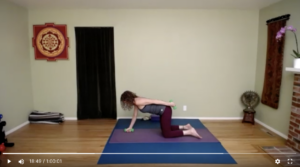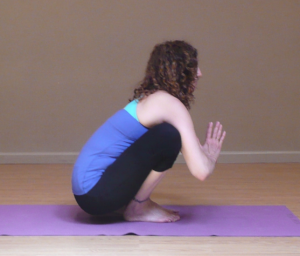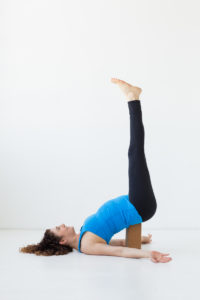I’m excited to launch a new part of my practice as a Certified Functional Medicine Health Coach. This compliments my current work as a yoga teacher and expert in physical rehabilitation and movement. I’m writing today to tell you my story about how I improved my health and invite you to explore this offering with me. For years I lived a healthy lifestyle informed by my yoga practice and both Ayurvedic and Chinese Medicine, or so I thought. Then hormonal changes began taking over. I didn’t experience the apparent symptoms until my mid to late forties, but looking back, they started much earlier. By age 50, my body had changed quite dramatically. Joint pain, reduced range of motion in my shoulders, migraine headaches, low energy, mood swings, brain fog, and weight gain were just some of the reasons I began a deep dive to figure out what was going on […]
Continue ReadingHealth Tips
Building Strength
I’m super excited to bring hand weights to my yoga teaching. I have been on a journey to get stronger for over ten years. Once I realized that I was spending too much time stretching and trying to get into some deep yoga postures, I felt like I was always chasing pain around my body. But strength work changed everything. It became clear that my core was weak, which was part of the cause of some repetitive injuries I had been dealing with trying to manage. You may have been in a class with me where we have added external load using a yoga block, bolster, or blanket. However, unless you have worked with me privately or done a specific strength-building course I’ve offered, you may have experienced only some of the benefits hand weights can offer. First, I began focusing on more strength-building postures using my body weight and […]
Continue ReadingLearning to Listen
Are you a good listener? By that I mean do you listen to the messages your body is sending? Feelings and sensations are your body’s thoughts. They alert you to what is happening and what you might need. Generally speaking, most people are too busy to notice what their body is saying. Your body can alert you of its needs the same way it alerts you of hunger and pain. The question is, do you pay attention? In Western culture, the body and the mind are regarded as separate parts. Yet in the East, they are considered an integrated unit. Yoga practice, which includes physical posture, breath work, and meditation, is an opportunity to build a relationship with your body. Time on your Yoga mat or meditation cushion provides a space to get quiet enough to really listen. It takes a dedicated practice to expand your awareness and feel all […]
Continue ReadingSquat Like Your Ancestors
Long before chairs were invented humans took a load off in a natural seat. Our ancestors and many people all over the world today use the resting squat as a position to rest, eat, wait, and well you know, relieve themselves. Squatting is a fundamental human position. It’s hard wired into your DNA. I love watching kids squat without even a thought or a struggle. Unfortunately many people loose the ability to squat as they grow older. Have you ever thought about why? If you guessed that one sitting in chairs is one of the reasons you were right! When you sit in a chair your body stays flexed 90 degrees at the hips and knees. Some of your muscles turn off because they don’t have to work to hold you up, the chair supports you. Other muscles end up over-stressed. Over time your hips and legs become weak and tight and you […]
Continue ReadingBreak Up With Stress – Part Four – Inversions For Health & Well-Being
You may have heard that inversions in yoga are good for you. But do you practice them? Maybe you are a bit intimated by the thought of doing an inversion. Or you don’t think you are strong enough to hold an upside down pose long enough to reap the benefits. Or perhaps when you think of an inversion you think of headstand and another pose that seems more like a circus trick than something you see yourself doing. This week I would like to demystify inversions and make them accessible to you on a daily basis. Inversions revitalize your whole system. By taking the weight off your legs, they relieve strain. By turning the internal organs upside down, sluggish parts are awakened. They improve circulation, support the glandular system, and help the body and mind relax, promoting deeper sleep. What is an inversion? Technically an inverted posture means that your head is below […]
Continue Reading



